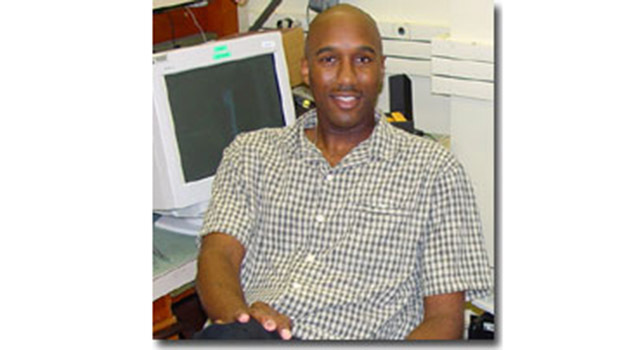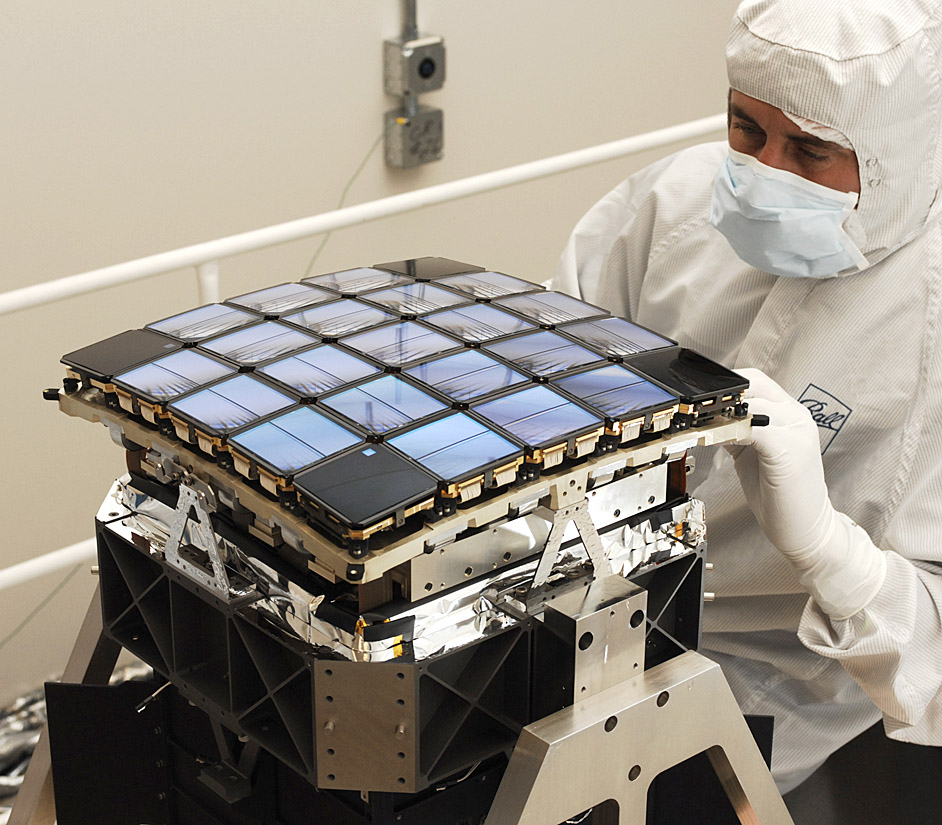4 min read

JPL physicist Ken Brown aims high.
Twice named All-American in track and field, he placed 12th in the 1992 U.S. Olympic Trials qualifier in high jump. Now, he has his sights set on even loftier goals -- building an instrument to spot hard-to-see planets outside our solar system, inspiring students, improving education, and strengthening the community.
Brown and his team at JPL are developing an experimental version of an instrument that will eventually fly in space. Called a "nulling" interferometer, the instrument will be able to cancel out the blinding light of a distant star to see if a planet shines close by. It will be a key part of NASA's Terrestrial Planet Finder, a future mission to search for planets like Earth elsewhere in our galaxy.
"Light is a wave," Brown said. "The idea of an interferometer is to split the incoming light and 'null out' the bright light from a star so that the only light we see is from the planets." The team first performed the nulling experiment at room temperature, then inside a vacuum chamber with the temperature lowered to minus 301 degrees Fahrenheit (minus 185 degrees Celsius).
"We need to simulate the spacecraft's environment," Brown said, "to learn as much as we can about how our instrument will perform and test for every possibility before launching."
The next step for Brown and his team of eight colleagues will be to build an even larger experimental interferometer, move it into a specially designed chamber, and lower the temperature even further, to minus 458 degrees Fahrenheit (minus 272 degrees Celsius), the temperature of space. This larger instrument will include mirrors that will move and point to targets just as the flight version will do in space. "It's not a trivial thing," said Brown, who has been working on the Terrestrial Planet Finder Mission for about a year.
If it were trivial, or boring, it probably wouldn't appeal to Brown. He likes to practice what he preaches to students, "Choose something to do because you're interested in it, not because it's easy. If something is hard, that's OK, you just need to understand it better."
Like physics, education is something that interests Brown. He teaches basic physics at Cal State, Dominguez Hills, and often speaks to secondary students. "We're losing our future mathematicians and scientists," he said. "I try to go out and be an example of what's possible." Brown also serves on the California Department of Education's Technology Advisory Group. Chaired by Ask Jeeves founder Garrett Gruener for Jack O'Connell, state superintendent of public instruction, the group's mission is to find better ways to help students learn. "We're looking at the next generation of learners and how technology can help," Brown said.
Education is something of a family business for the Browns. His father, a retired probation officer, is a prominent member of the University of Iowa's Black Alumni Association. His mother is a professor of music at Cal State Long Beach, and his wife is a school psychologist and counselor.
Community involvement is also a family concern. Brown serves as president of the board of JobStarts, Inc., a non-profit organization that helps residents of South Los Angles find work and provides training in financial literacy. His father was one of the founders of the organization, which just celebrated its 15th anniversary.
Brown began his career with JPL as a college intern and has worked on a variety of missions, including the ocean-observing Topex/Poseiden and Cassini, which recently arrived at Saturn. As a youngster, Brown got the "engineering bug" by taking things apart and trying to put them back together. "I wasn't always as successful as my parents would have liked," he said.
Brown received his B.S. in computer science and physics from Morehouse College and a master's in applied physics from Clark Atlanta University. A native of Los Angeles, he moved back to California after college and now lives in South Los Angeles with his wife and two young sons.







